.

Lunch-hour nap in Battery Park, lower Manhattan: photo by Wil Blanche, May 1973
And then into the Valley of the Shadow of Death
rode the Ten Thousand, deceived
into believing they had been set free
and maybe now had better things to do
and over their bodies the earth lay heavily
and all round slowly flowed the rust brown water
and skyward soared the tall buildings they had made
as monuments to the victories they had achieved
which no one could remember any more.
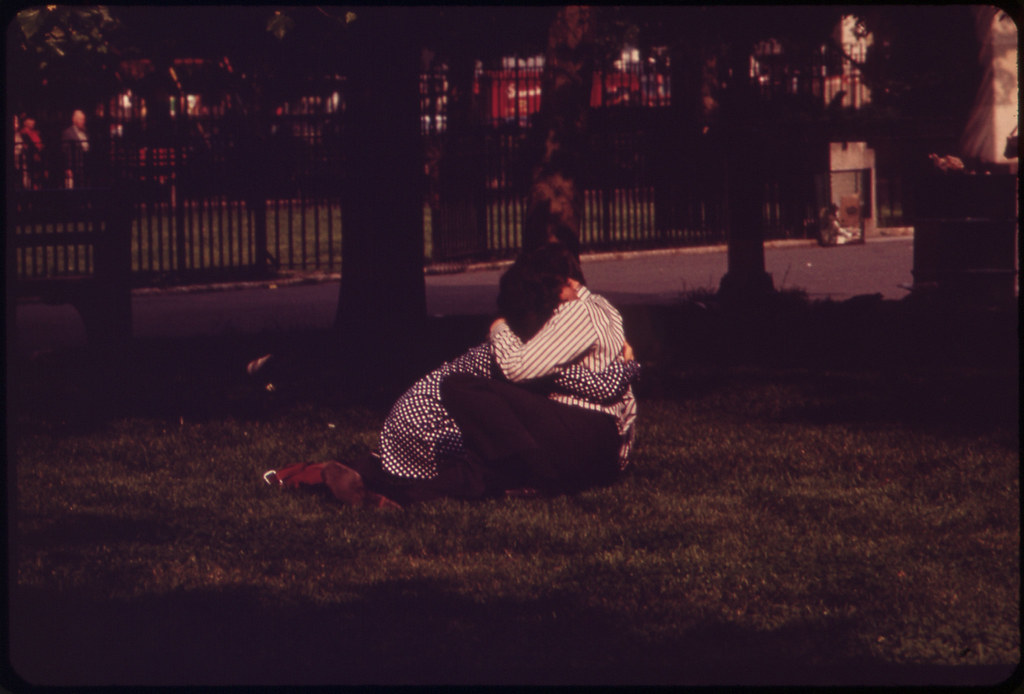
In Battery Park, on the lower tip of Manhattan: photo by Wil Blanche, May 1973
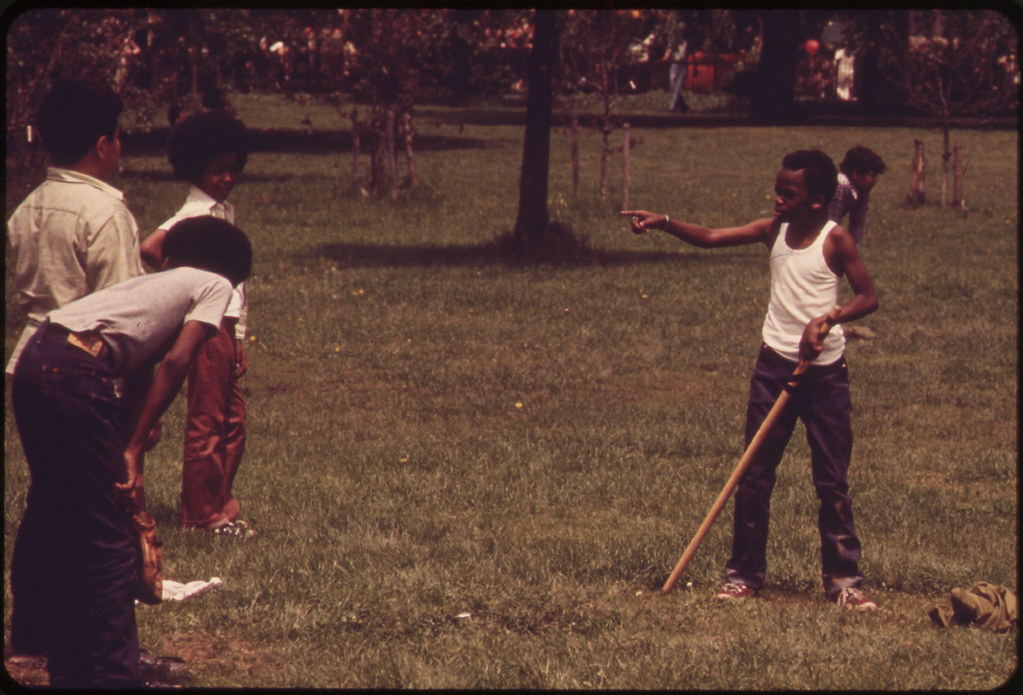
Youngsters playing in Battery Park, on the tip of Manhattan Island: photo by Wil Blanche, May 1973
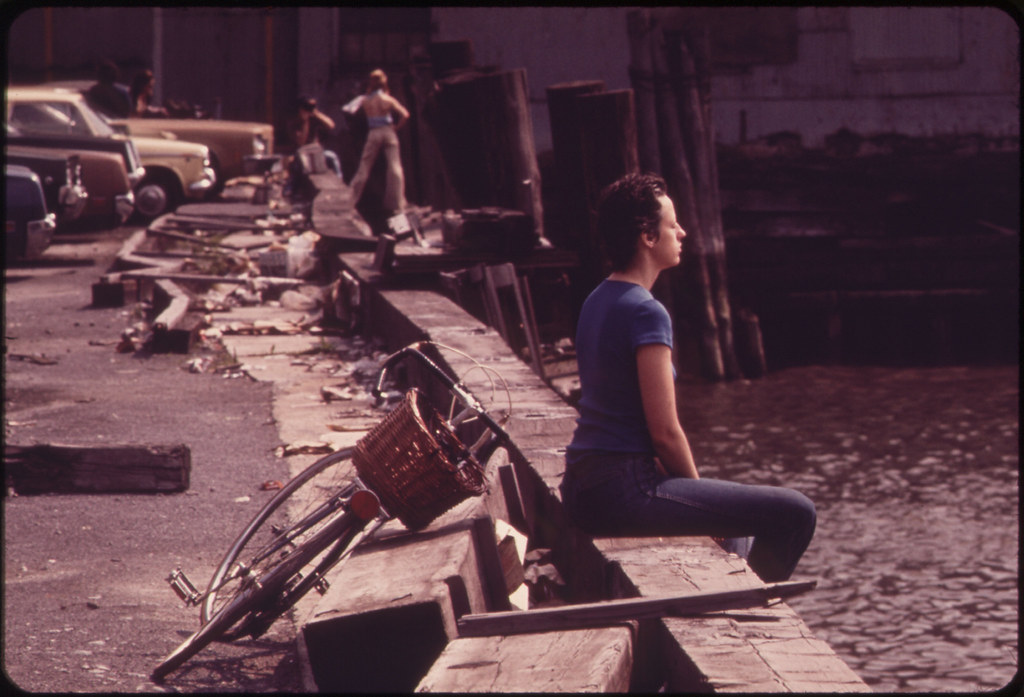
Pause for relaxation on a pier overlooking the Hudson River a few blocks north of lower Manhattan's newly built World Trade Center: photo by Wil Blanche, May 1973
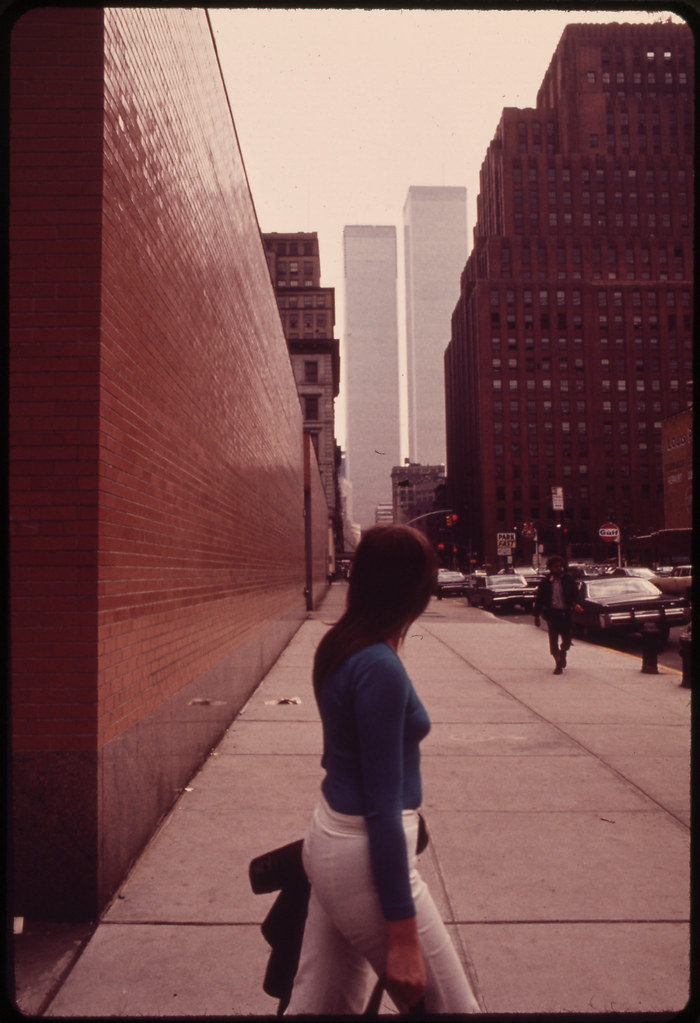
Looking south on West Broadway toward the towers of the World Trade Center: photo by Wil Blanche, May 1973
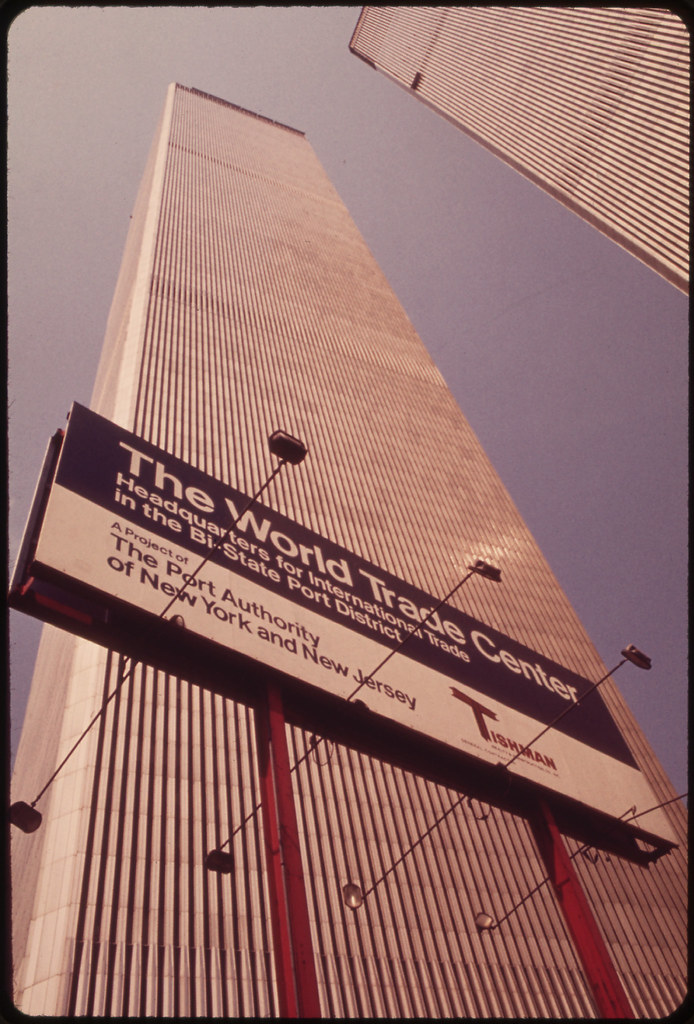
Overlooking the Hudson River in lower Manhattan, the towers
of the World Trade Center soar skyward to a height of 1.350 feet: photo
by Wil Blanche, May 1973
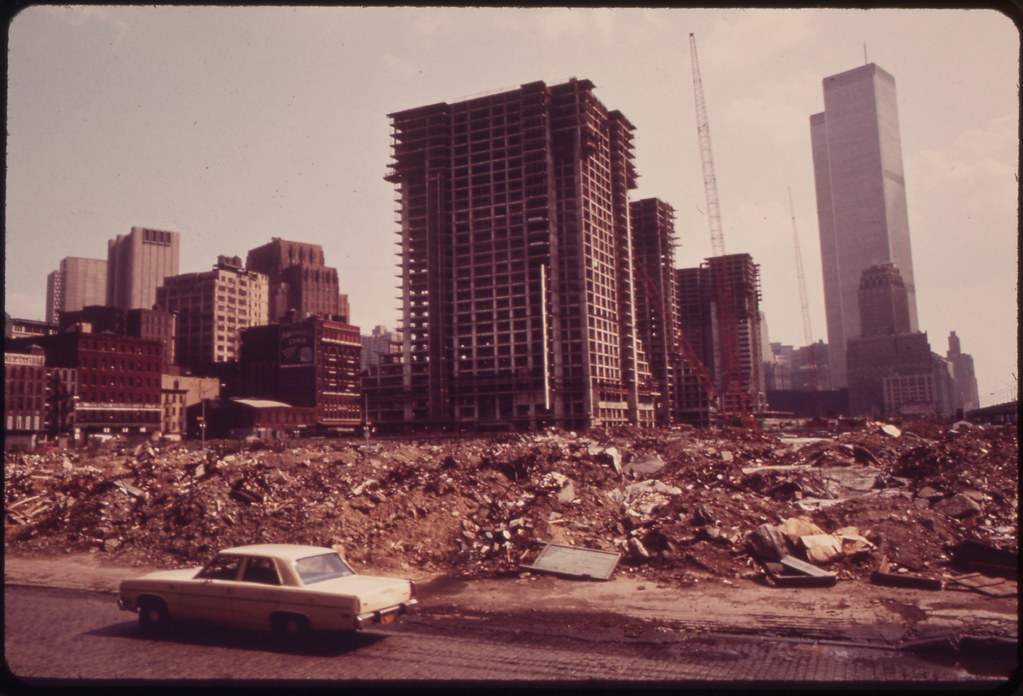
Construction on lower Manhattan's West Side, just north of the World Trade Center (tall buildings in the background): photo by Wil Blanche, May 1973
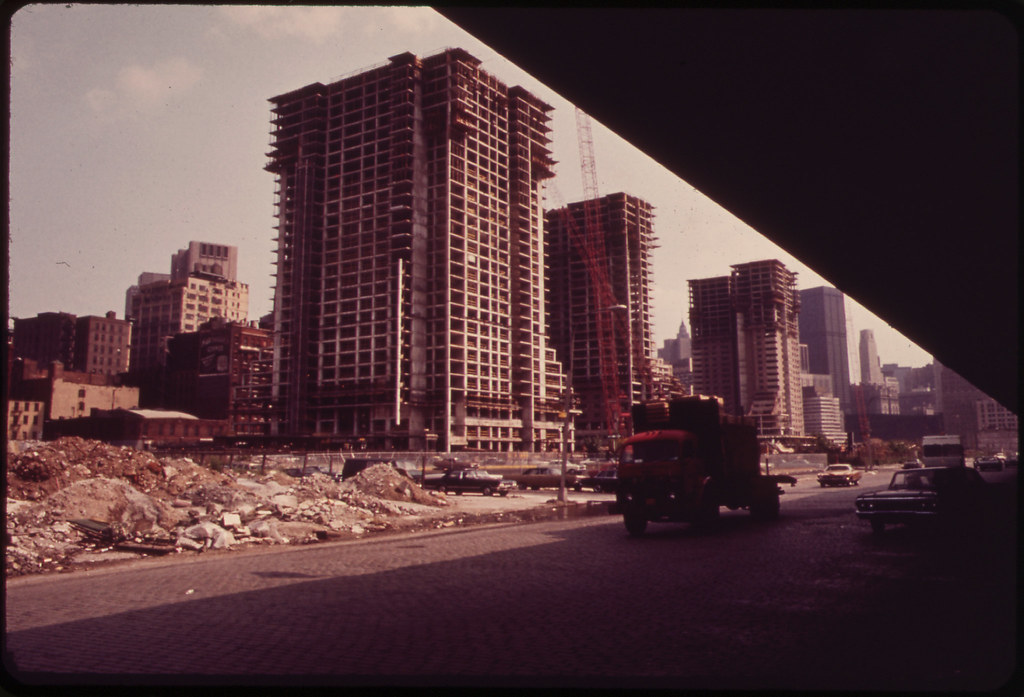
New apartments under construction in lower Manhattan's West Side: photo by Wil Blanche, May 1973
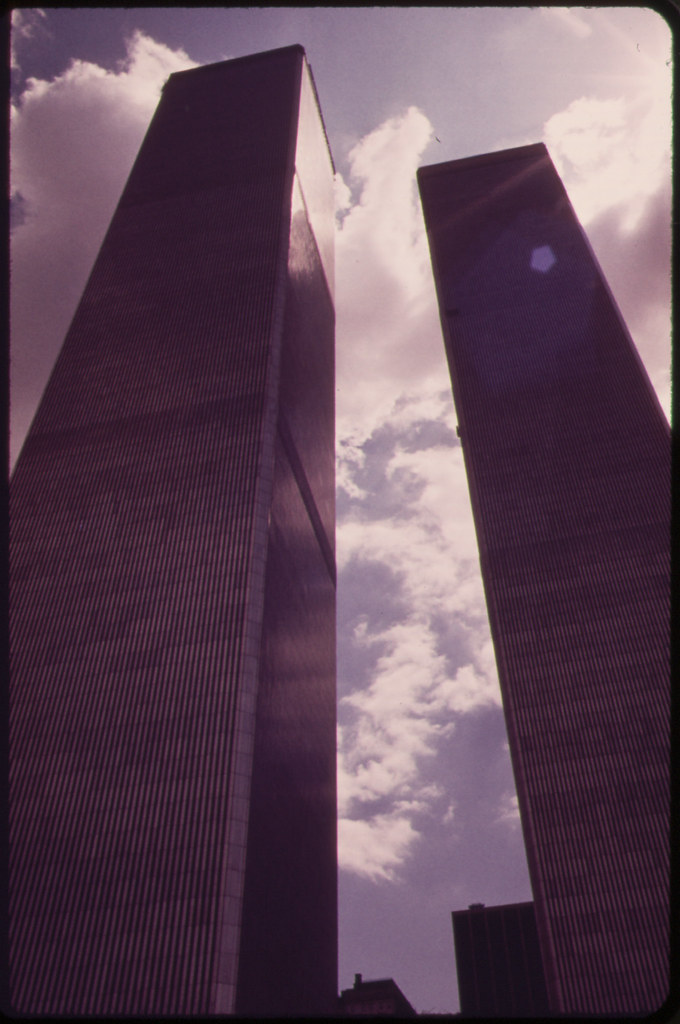
Towers of the World Trade Center seen from West Street: photo by Wil Blanche, May 1973
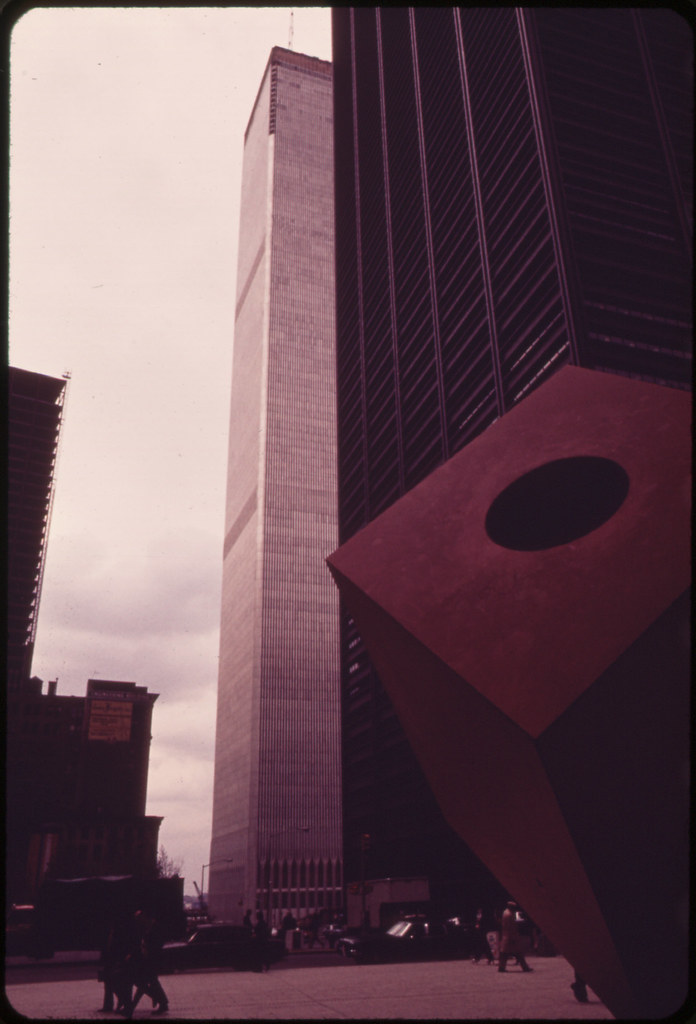
Manhattan's huge World Trade Center still under construction, seen from lower Broadway: photo by Wil Blanche, May 1973
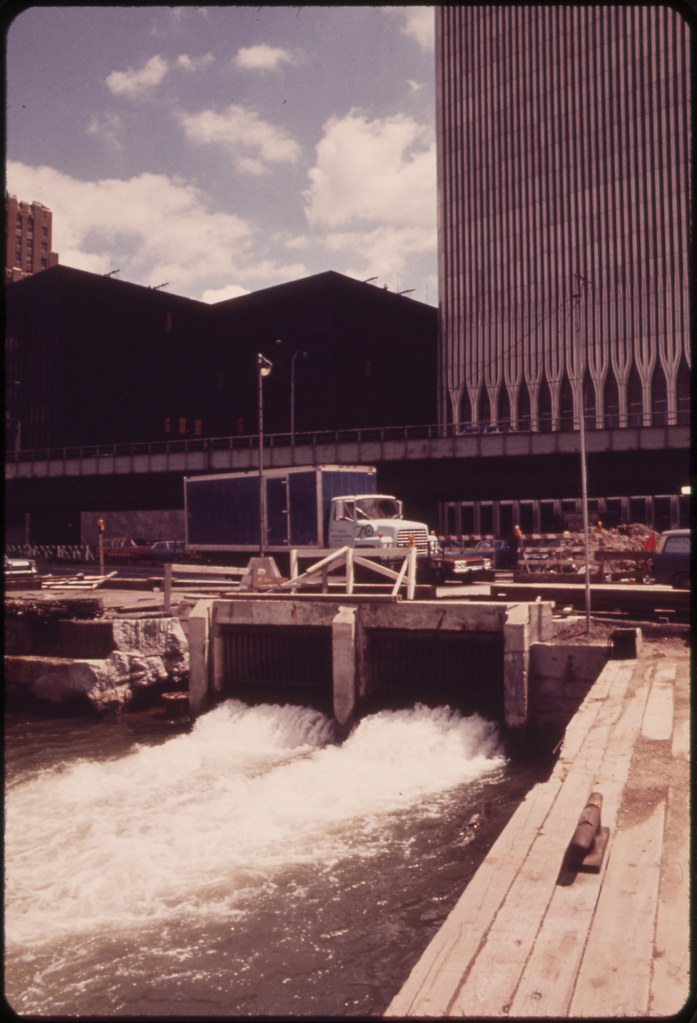
Outflow of drainage from the World Trade Center, New York's latest giant, under construction between Vesey and Liberty Streets in lower Manhattan. There Is no provision for waste treatment as is the case with all Westside buildings, sewage will go directly Into the already badly polluted Hudson River: photo by Wil Blanche, May 1973

Debris floating on the Hudson River near the newly constructed World Trade Center: photo by Wil Blanche, May 1973
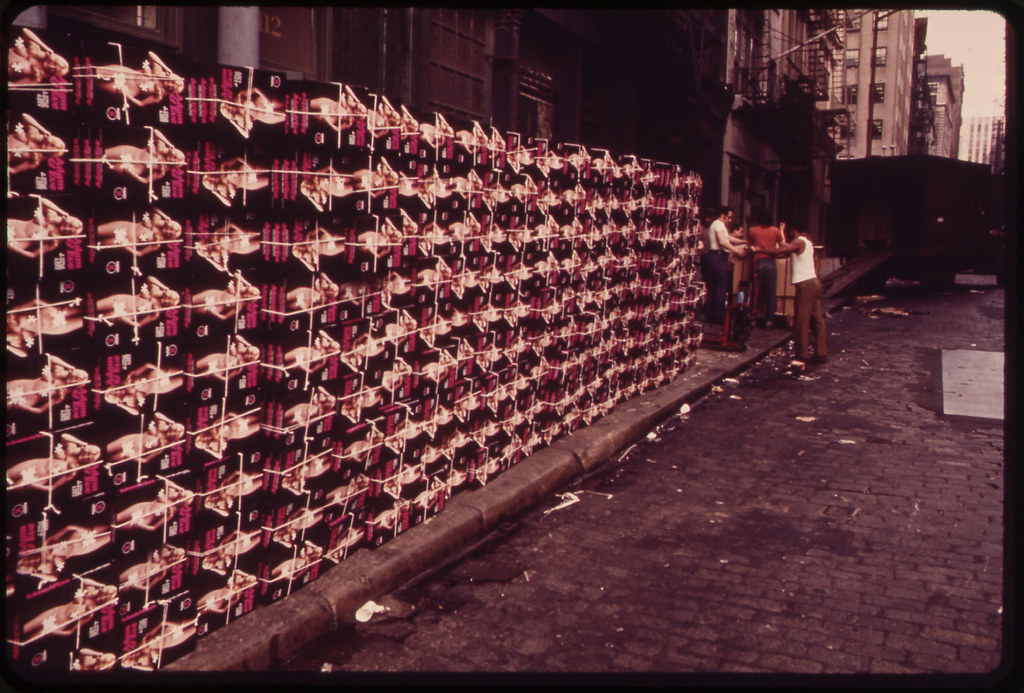
Freight handlers with stack of boxed women's gear outside warehouse on Reade Street, lower Manhattan -- looking east from West Broadway: photo by Wil Blanche, May 1973

Manhattan side of the Brooklyn-Battery Tunnel: photo by Wil Blanche, May 1973
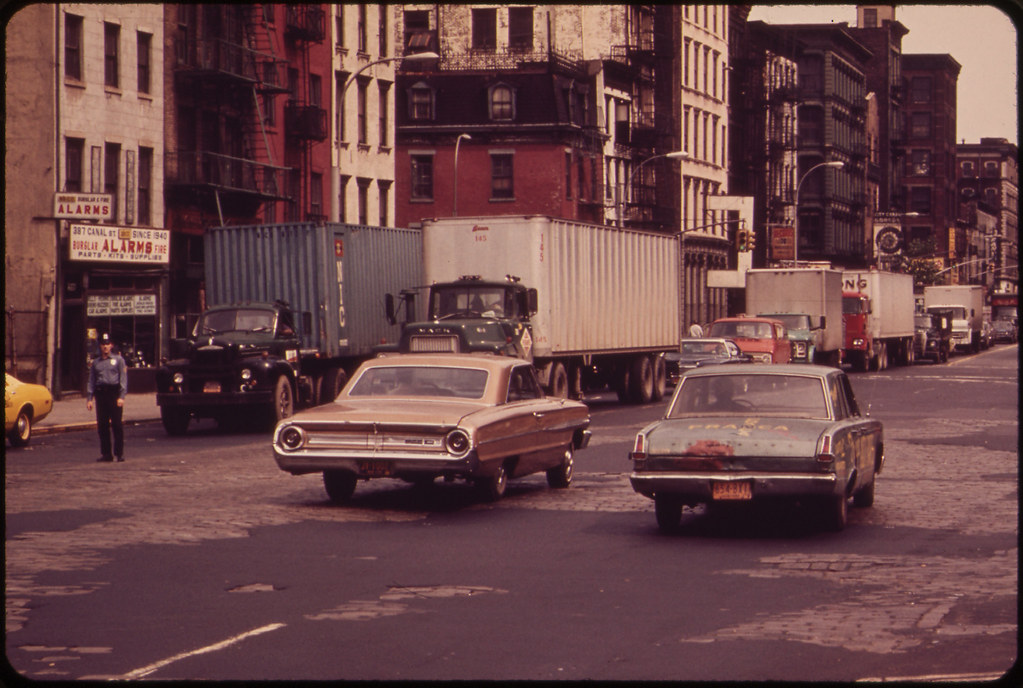
Holland Tunnel traffic lined up on Canal Street: photo by Wil Blanche, May 1973
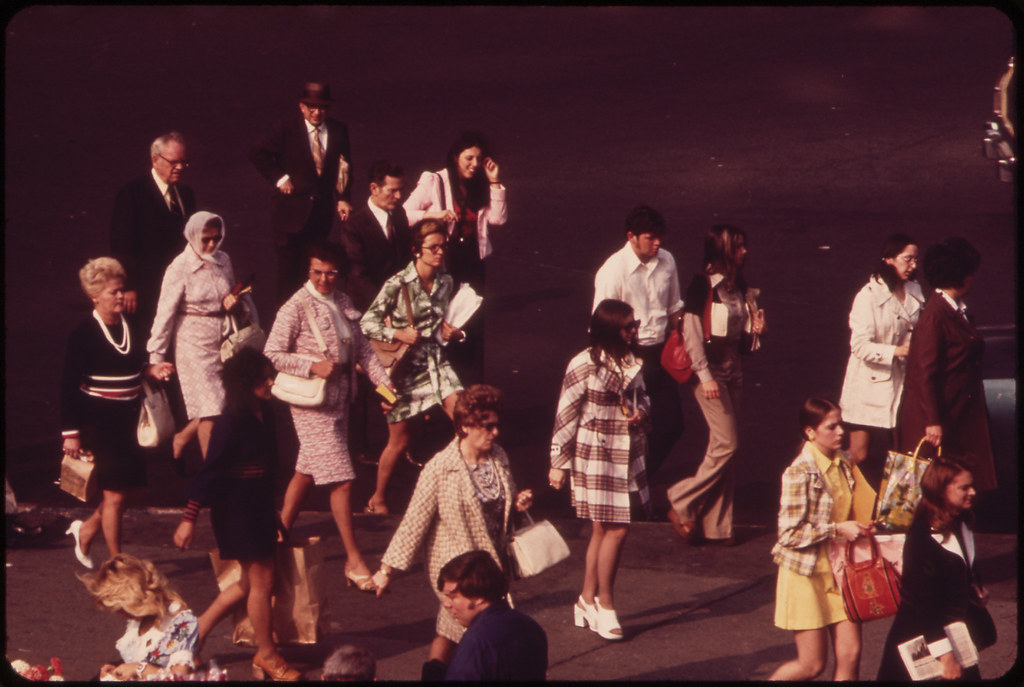
Commuters entering the terminal of the Staten Island ferry: photo by Wil Blanche, May 1973
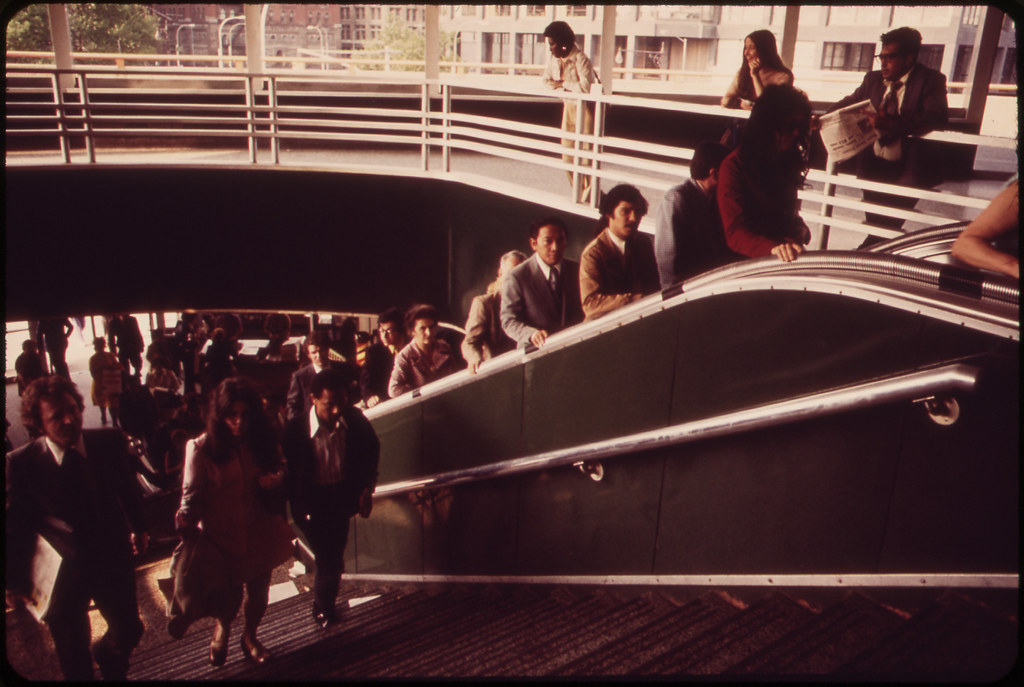
Commuters in the Staten Island ferry terminal in lower Manhattan's Battery Park area: photo by Wil Blanche, June 1973
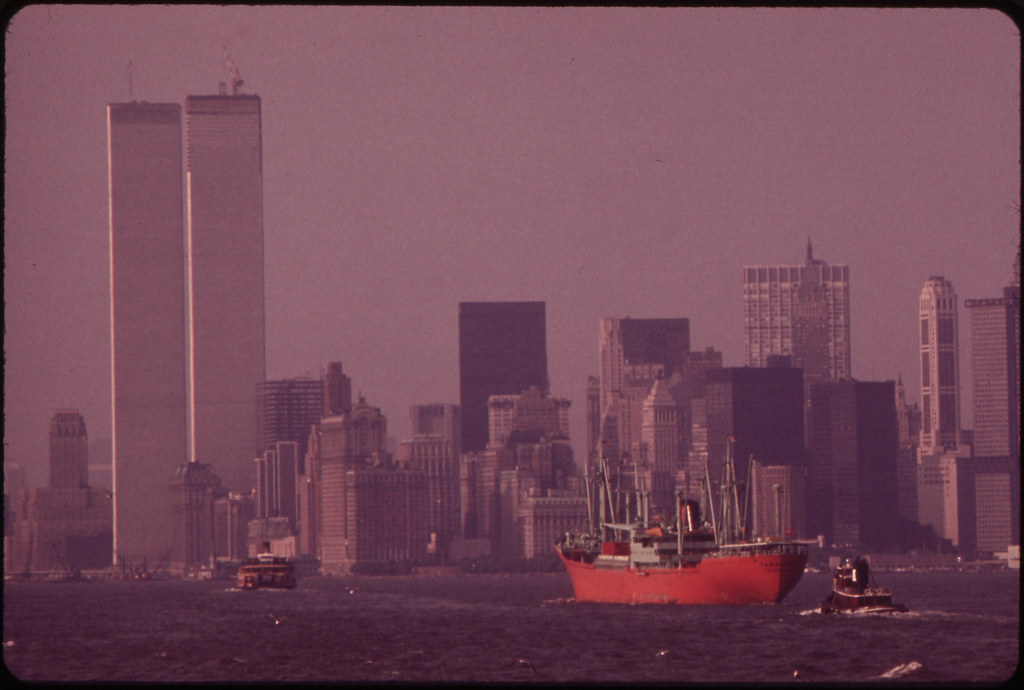
World Trade Center (left) and lower Hudson River shipping seen from the Staten Island ferry: photo by Wil Blanche, May 1973
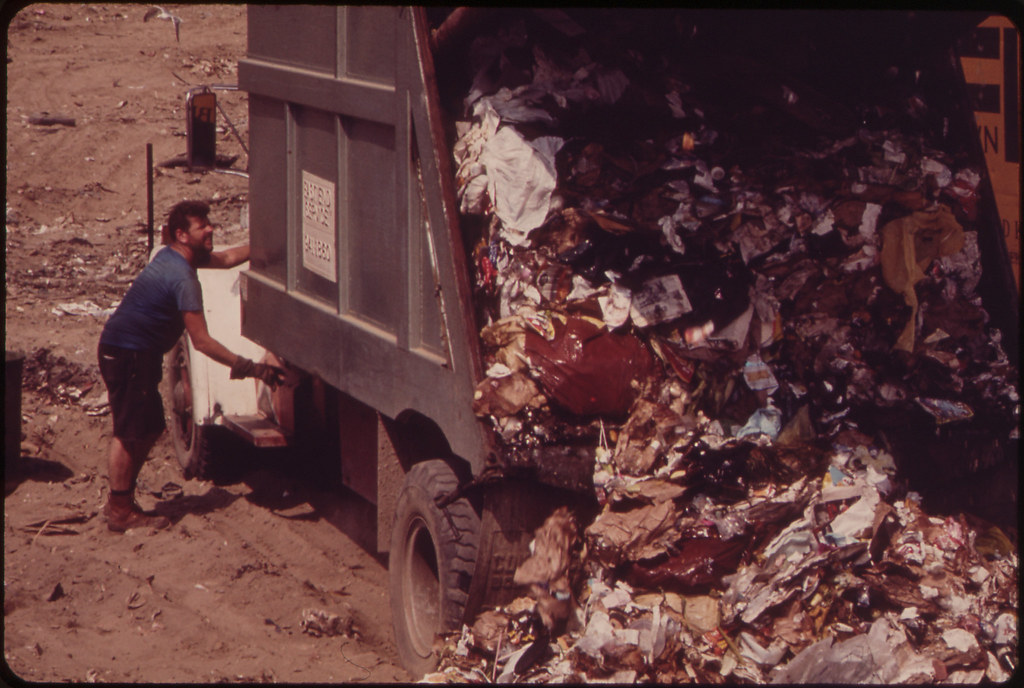
Dumping garbage at Croton landfill operation along the Hudson River: photo by Wil Blanche, August 1973
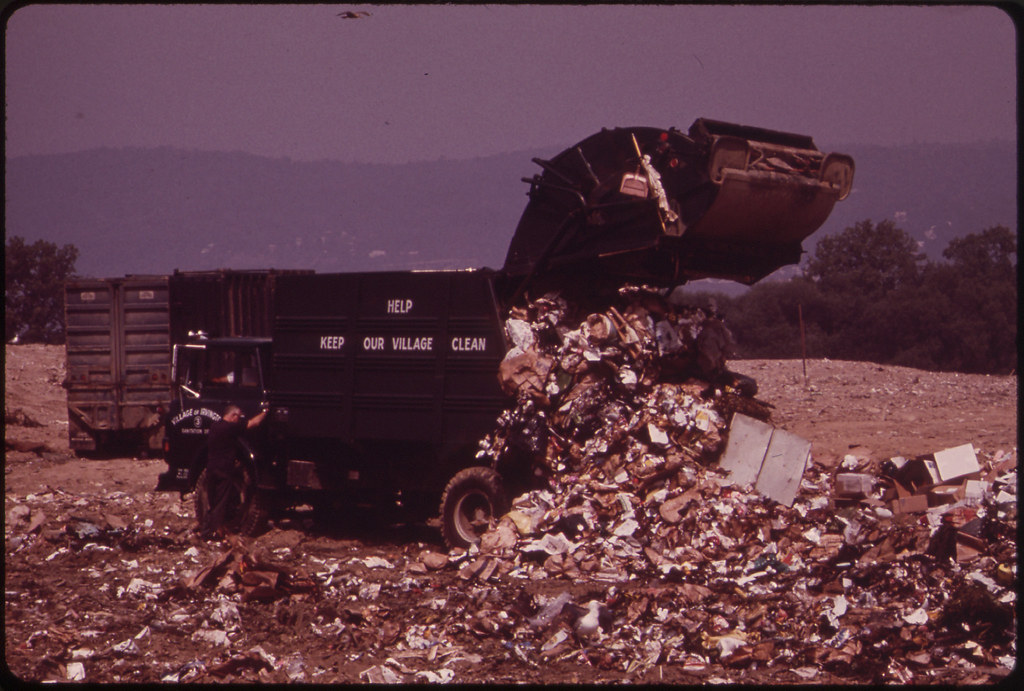
Dumping garbage at Croton landfill operation along the Hudson River: photo by Wil Blanche, August 1973
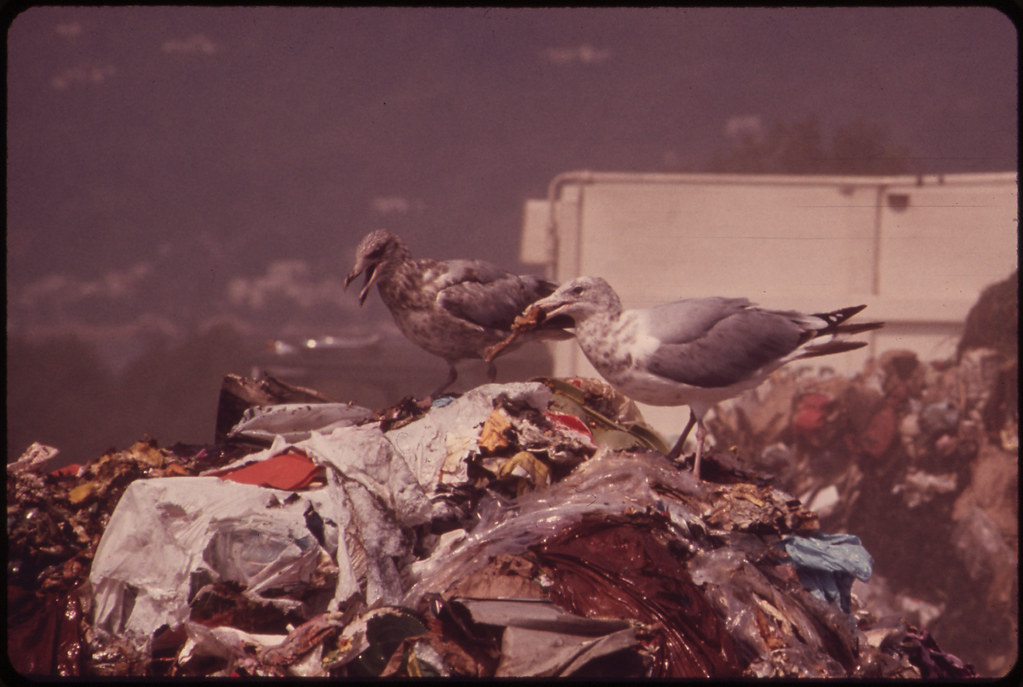
Seagulls scavenge at Croton landfill operation along the Hudson River: photo by Wil Blanche, August 1973

Seagulls scavenge at Croton landfill operation along the Hudson River, New York: photo by Wil Blanche, August 1973
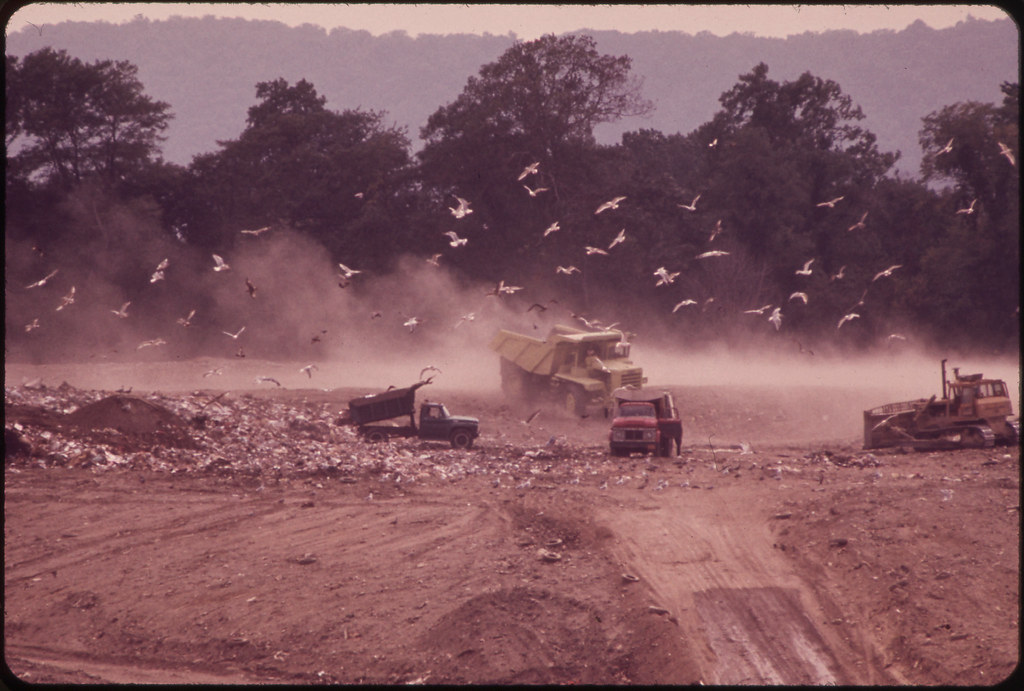
Dumptrucks, earthmovers and seagulls at Croton landfill operation along the Hudson River, New York: photo by Wil Blanche, August 1973
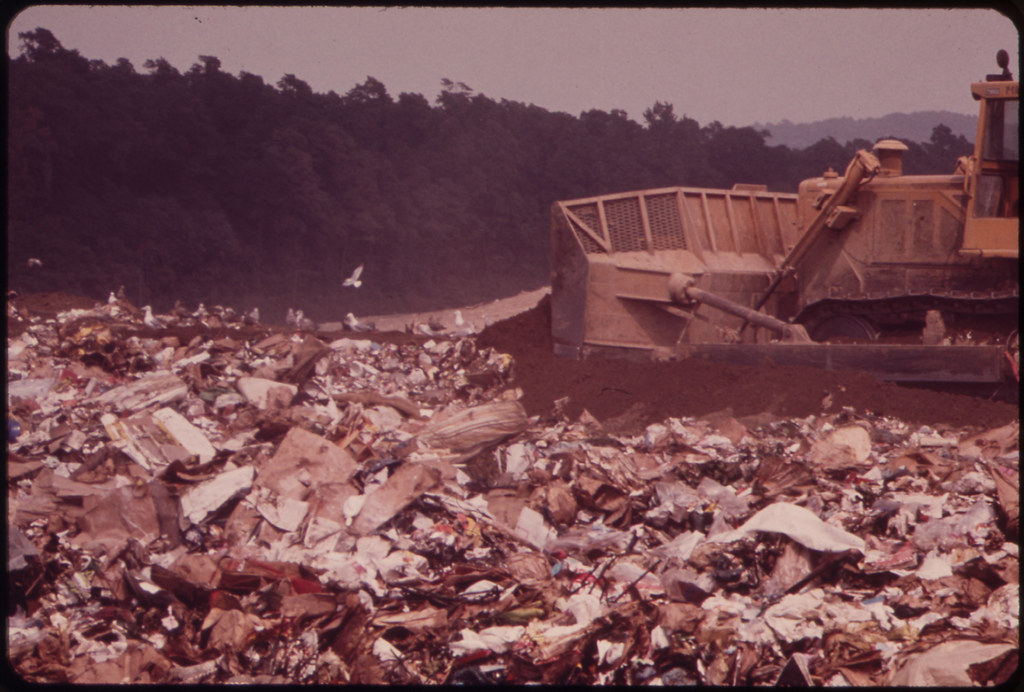
Covering garbage with one foot of earth at Westchester County's Croton landfill operation: photo by Wil Blanche, August 1973
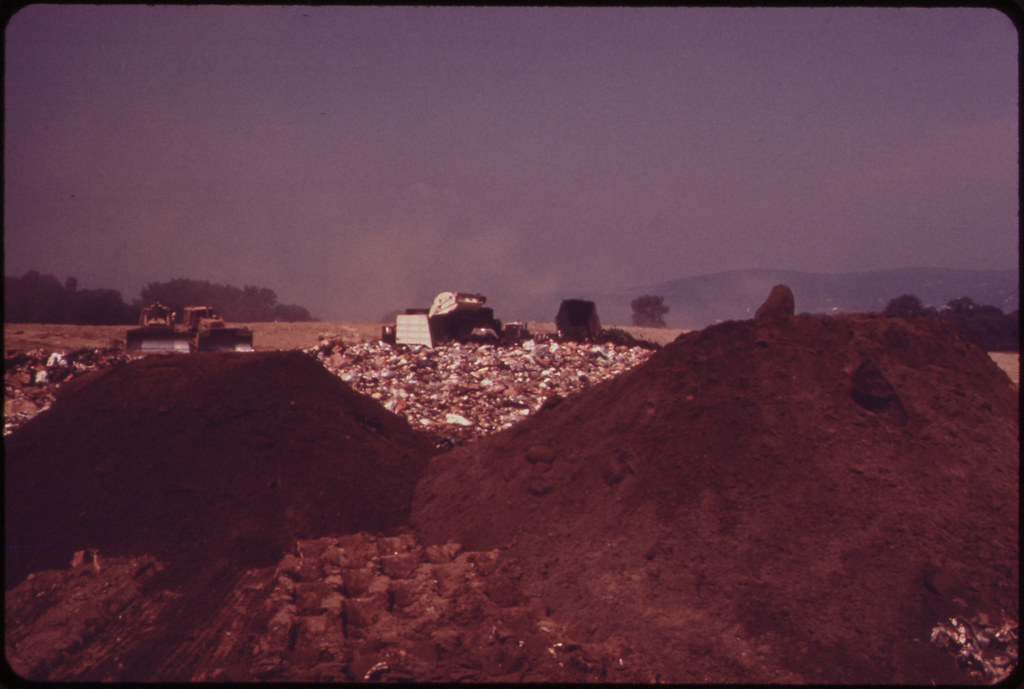
Trucks dump earth fill over garbage at landfill operation in Croton: photo by Wil Blanche, August 1973
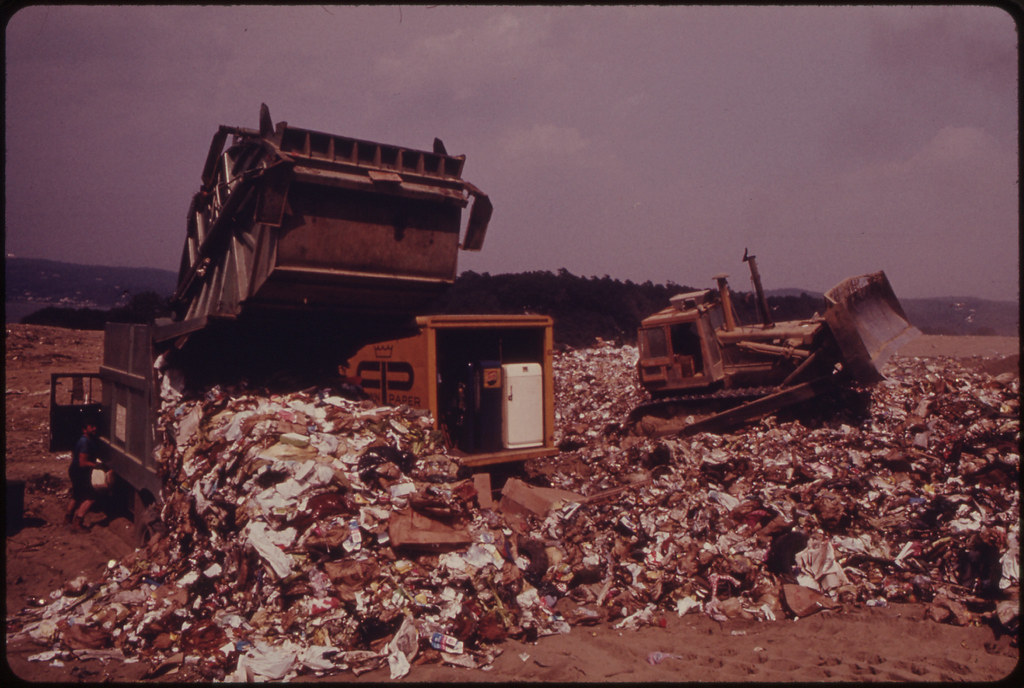
The Croton Dump on the Hudson River is just a few miles from Croton Point Park: photo by Wil Blanche, August 1973

Fun in the Hudson River off Croton Point Park photo by Wil Blanche, August 1973

Schnauzers afloat on the Hudson River off Croton Point Park: photo by Wil Blanche, August 1973
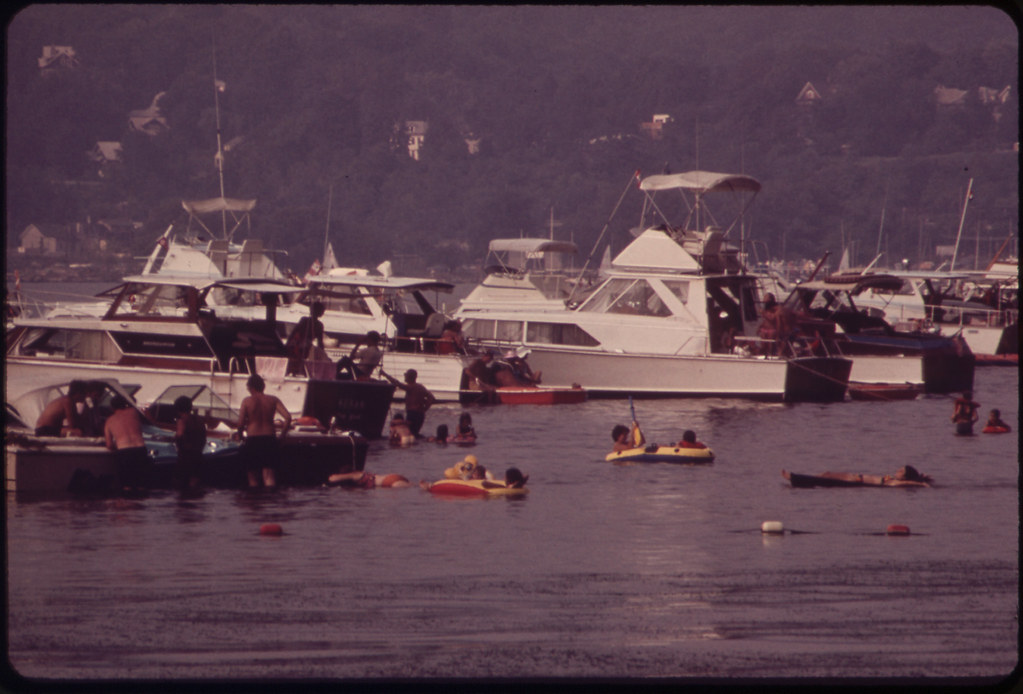
Pleasure boats anchored in cove of Hudson River near Croton Point Park: photo by Wil Blanche, August 1973
Photos by Wil Blanche, May-August 1973 for the Environmental Protection Agency's Documerica project (US National Archives)
Croton Point Park, seen here in Wil Blanche's photos, site of a former county and regional landfill for well over seven decades, was closed and capped by a federal judge's order in 1986 thanks largely to the efforts of grassroots activists.
ReplyDeleteBut...
At Croton Point, Problems Persist: Tessa Melvin, NY Times, 12 June 1988
"The 600 acres of Croton Point once formed one of the largest tidal marshes on the Hudson River. After 50 years as the site of an active county dump, however, the area is judged by environmentalists to be a health hazard. A Federal judge last month called the landfill, which was closed in 1986, an environmental time bomb.
"The Great Hudson River Revival, a yearly fund-raising event for the environmental sloop Clearwater and the region's largest folk-music festival, has abandoned its usual riverfront location after a decade of holding the event at Croton Point Park. When this year's celebration of the river opens next weekend, it will be inland, at the Westchester Community College campus in Valhalla.
"The festival was moved reluctantly, according to the executive director of the Clearwater organization. 'The facts point to a serious problem at Croton Point and a recognition of that problem by the state and Westchester County,' John C. Mylod said. He explained that the move seemed to be the 'prudent thing to do' after the landfill site was upgraded to a Class II hazardous-waste category last year by the State Department of Environmental Conservation."
And a decade later, this bit of history:
Hinchey Report on mob influence in landfill dumping: Westchester Co. Gazette, 8/19-8/25, 1999
"[New York state congressman] Maurice Hinchey led the investigation leading to the 'Hinchey Report'... identifying individuals in the carting industry state-wide, and their links to organized crime..."
"Mr Hinchey said that mob influence in the carting and haling industry has both economic and environmental effects. He said it was disclosed that mob-backed carters dumped toxic waste at the landfill, which served the county for more than 60 years, in the fifties, sixties and seventies."
The Hudson River beach at Croton was again threatened in the summer of 2011 after a sewage plant fire and 200-million-gallon sewage release in New York City.
"The sewage can travel north despite the Hudson River's strong southward current because the river is an estuary, with tides of up to six feet.
"'Tides travel up the Hudson all the way to the Troy dam, making the water in the Hudson slosh back and forth, much as you would see in a bathtub,' according to the Cary Institute...
"The county health department issued a recommending residents stay out of the Hudson because of the sewage discharge."
--Lanning Taliaferro, Ossining Patch, 22 July 2011
The same summer Wil Blanche was at work on this portfolio, another very fine photographer, Arthur Tress, was holding his nose and looking at a different sector of the Great Eyesore:
ReplyDeleteArthur Tress: City of Ashes: "Ashamed of my eyes that behold it"
In 2010 New York's citywide waste removal averaged 10,991 thousands of tons per day.
You could look it up. In fact, I did. Phewww!
Some academic data from documented sources in the heart of Gotham City, Crap Capitol of Empire:
"Landfills are responsible for 36 percent of all methane emissions in the U.S., one of the most potent contributors to global warming.
"New York City residents currently recycle only 17 percent of their total waste -- half of what they could be recycling. Plastic film, such as supermarket bags, comprises 7.5 percent of total waste, while clothing and textiles make up 5.7 percent of total waste.
"Paper recycling makes money for NYC -- it nets approximately $7.5 million after the costs of collection. However, more than 90 percent of printing and writing paper still comes from virgin tree fiber.
"Exporting NYC garbage to other communities cost city's taxpayers $290 million in 2007 and was estimated to rise to $5.7 million the following year. The cost of collection is in addition to the cost of export.
"Food scraps and yard waste make up 22 percent of NYC's waste...
"Each year diesel trucks carry Manhattan's garbage for 7.8 million miles -- the equivalent of driving 312 times around the earth.
--The Weissman Center for International Business, Baruch College/CUNY 2012
Tom - Thanks for these lovely Wil Blanche images of NYC c. 1973. 40 years later we're having another hot and gritty July. Fewer landfills, as Fresh Kills turns itself into parkland (methane detectors included) and the mayor proposes mandatory composting. My own feeling is that we are as likely to suffocate on plastic shopping bags as anything else.
ReplyDelete-David
Tom,
ReplyDelete"HELP / KEEP OUR VILLAGE CLEAN" !
7.6
light coming into fog against invisible
ridge, shadowed branches moving in wind
in foreground, sound of wave in channel
present relation of self to
self, or which itself
among negative ones remains,
it seems, as material
blinding silver edge of sun above ridge,
fog on horizon to the left of the point
Tony: "I'm in Waste Management. There is No Mafia."
ReplyDeleteThe Sopranos: Waste Management Sit-Down
Hitler works for Waste Management
Hitler takes over maps and hours at Waste Management
And those victories weren’t victories at all, but just more illusions; a kind of euphoria maybe, a sense of relief that something was over and something else, preferably something blessedly new, would take its place. But they saw everything with the eye of memory, so it was always the same, different only in some illusory way that convinced them for a short time. And so they embraced one another, or slept alone on the grass in the bright sun, and tried to forget.
ReplyDeleteDisturbing and mesmerizing, these posts. And not to be one track, but fracking might be competing heavily for the prize of #1 methane releaser.
ReplyDeleteSeems like there are a lot of environmental time bombs. And we are making exponentially more as we go, esp. with the EPA being completely ineffectual, the Koch brothers taking over, and . . .
Thank you, David (local knowledge -- "suffocate on plastic shopping bags" ), Steve (Global Village, maybe?), Hazen ("...or slept alone on the grass in the bright sun, and tried to forget"), Nin ("fracking... competing heavily [with landfill ops] for the prize of #1 methane releaser").
ReplyDeleteAnother approach to the questions prompted in the mind by the images in this post:
Amiri Baraka: Somebody Blew Up America, Troy, N.Y., 16 December 2009
(Wil Blanche, by the way, is African-American.)
"Those who currently rule are however the heirs of all those who have ever been victorious. Empathy with the victors thus comes to benefit the current rulers every time. This says quite enough to the historical materialist. Whoever until this day emerges victorious, marches in the triumphal procession in which today’s rulers tread over those who are sprawled underfoot. The spoils are, as was ever the case, carried along in the triumphal procession. They are known as the cultural heritage. In the historical materialist they have to reckon with a distanced observer. For what he surveys as the cultural heritage is part and parcel of a lineage which he cannot contemplate without horror."
ReplyDeleteWalter Benjamin
Triumphalism indeed.
ReplyDeleteThat Wil Blanche showed the raw untreated sewage gushing from the sacred tower helps us to see that linear readings of history are not always the best readings.
Without those tremendous ugly obeliskoid monuments to the religion of capital, the world would perhaps have taken a quite different course.
Targets.
Simply grab a couple of aviation lessons, and home in on the stench.
Fallout from the rage and confusion and blaming and tears and handwringing and vengeance-seeking and justification-by-pretext begun on that "fateful" day will still be settling long after we've vanished.
Sorting present from vanished and victor from vanquished of course remains a recursive work in progress, in the nonlinear reading.
How many times have we seen those towers falling.
"The spoils are, as was ever the case, carried along in the triumphal procession. They are known as the cultural heritage."
Why is it catastrophe always brings out the deepest needs, fears, desires of the humans.
The past twenty-four hours for example. The international transit of crude oil and of tourists -- essential Imperial businesses.
Violent disruption of these forms of traffic provides outlet for all the sublimated bad dreams of the eternally enchained.
Scène d'horrueur, Lac-Megantic, Quebec (explosion of driverless train carrying crude oil from the Bakken Field, North Dakota), 6 July 2013
Asiana Airlines Boeing 777 Seoul-SFO on fire after crash at SFO International, 6 July 2013
Of particular interest to the historical materialist would be the comments posted on these clips.
By the way, this post originated in seven months of meditation upon the top shot.
Looking at it without knowing any of the subsequent history (nonlinear reading), everything to follow seems perfectly contained, as if the darkness of the scene had been impregnated with clues.
Secret Memes for Secret Government?
ReplyDelete“Unlike the Supreme Court, the FISA court hears from only one side in the case — the government — and its findings are almost never made public. . . . it is not clear in all circumstances whether Internet and phone companies that are turning over the reams of data even have the right to appear before the FISA court.
Created by Congress in 1978 as a check against wiretapping abuses by the government . . . since major changes in legislation and greater judicial oversight of intelligence operations were instituted six years ago, it has quietly become almost a parallel Supreme Court, serving as the ultimate arbiter on surveillance issues and delivering opinions that will most likely shape intelligence practices for years to come. . . .The current 11 judges, who serve seven-year terms, were appointed to the special court by Chief Justice John G. [“Pat”] Roberts Jr., and 10 of them were nominated to the bench by Republican presidents.”
In Secret, Court Vastly Broadens Powers of N.S.A.
Dear Mr Unknown,
ReplyDeleteYo, most definitely. And dat be why we got Judges for, dog.
Weird Al: Whatever You Like: "It's all about the Washingtons... That's the way I roll"
T. I.: Whatever You Like (original version)
T. I.: original version, with lyrics ("home drop Bentleys, I swear")